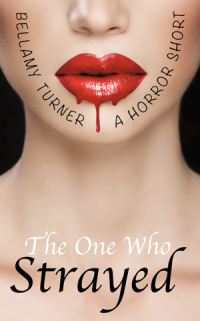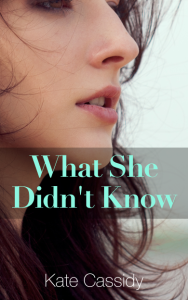Tags
cover design, eBook covers, Glasgow, guest blog, humor, indie writer, summer
Coffee with Barb and Kari Anders
Yesterday: the mercury soared to 68F (20C) and Glasgow got drunk on sunshine, as the dog and I noticed when we went to the park. As far as I could tell, the entire city came outside, sun-worshipping bodies splayed everywhere as we tried not to notice the truly disturbing amounts of pink flesh on shirtless display. We strolled through the amusing exhibit for the 2016 Festival of Architecture’s Ideal Hut Show, listened to bagpipers enthusing at nearby weddings, and stopped to watch the actors rehearse for the upcoming Bard in the Botanics outdoor Shakespeare performances.
And yes, I was stalling. Of course, I should have been home writing away, working on the next masterpiece or at least blog post. But instead, I bought some scones and ice-cream from the outdoor cafe, secure in two pieces of sure knowledge: my Sunday blog post is in the bag, thanks to guest Kari Anders, and tomorrow could be cold and rainy.
Today:
 It’s cold and rainy. I’d hoped to have you all join us in the garden, where roses are budding, and I’ve finally potted and hung all the baskets of fuchsias, pansies, geraniums, etc. I’ve been nursing along in their tiny little seed trays. (Note: this process mystifies the Hub, who helpfully points out the flats of cheap already-established-and-thus-don’t-take-up-limited-windowsill-space-in-our-house plants at nearby stores. I tell him we didn’t buy the kids or the dog already grown, and leave him muttering about how that might have been a good idea too…). But don’t worry. There’s a nice fire in the living room fireplace, and I have all those leftover scones and some hot coffee or tea.
It’s cold and rainy. I’d hoped to have you all join us in the garden, where roses are budding, and I’ve finally potted and hung all the baskets of fuchsias, pansies, geraniums, etc. I’ve been nursing along in their tiny little seed trays. (Note: this process mystifies the Hub, who helpfully points out the flats of cheap already-established-and-thus-don’t-take-up-limited-windowsill-space-in-our-house plants at nearby stores. I tell him we didn’t buy the kids or the dog already grown, and leave him muttering about how that might have been a good idea too…). But don’t worry. There’s a nice fire in the living room fireplace, and I have all those leftover scones and some hot coffee or tea.
 And I have a special treat! Cover designer Kari Anders is joining us to talk about her new cover design company. As an indie author myself, I struggled to make a cover for my own book. If you’re an author or just curious about what makes a good cover work, Kari has plenty of tips and food for thought. In looking over her sample covers, I particularly liked this one. Now I just need to write the story to go with it.
And I have a special treat! Cover designer Kari Anders is joining us to talk about her new cover design company. As an indie author myself, I struggled to make a cover for my own book. If you’re an author or just curious about what makes a good cover work, Kari has plenty of tips and food for thought. In looking over her sample covers, I particularly liked this one. Now I just need to write the story to go with it.
Any ideas?
Designing Your Own Book Cover: Elements of a Cover that Sells by Kari Anders
As an indie author, you’ve probably read about the differences between traditional publishing, self-publishing, and hybrid publishing. Some of you may have chosen to self-publish for the advantages it brings over traditional publishing: higher royalties, creative control, faster time to market, global rights retention, and more. Or you may have chosen to self-publish after rounds of unsuccessful queries. Either way, all indie authors need to understand the Elements of a Cover that Sells before finalizing their design and clicking that sweet button on Amazon that allows you to say, I am an author.
I’ve often heard traditionally published authors complain they have little to no say in cover photography or design. Authors begin to imagine what their cover looks like as they are writing their story. They feel they know their story best and therefore have the knowledge needed to design a great cover. Unfortunately, they link those two thoughts incorrectly. Knowing a story well is usually a fault when it comes to creating a cover, which is why traditional publishing houses usually keep authors far away from cover design.
Why? This is a problem best described through the cliché: it’s hard to see the forest through the trees. When authors are asked what their book is about, they often have a hard time answering. Their book is about so many things. They try to describe the main storyline, the subplots, the theme, the lesson, the story arc, the relationships between the characters, the character’s backstory, how the family got their dog, why they moved to San Francisco, all without giving away the ending. Has a friend ever asked you what your book is about? How hard was it to simplify your work into just a sentence or two?
Most authors are sentimental about their book, and rightfully so. They want the cover to do it justice. But they forget that the cover is packaging. It is intended to sell the product. It’s not intended to be the product. So, what sells a book? Does the cover need to intrigue readers? Does it need to have colors that pop against a white background? Does the text need to have high contrast? Maybe these are concerns if you are Stephen King or Nora Roberts. But if you are reading this, you are likely not already a New York Times Best Seller, and therefore, these details are secondary. You are trying to get your book read by readers looking through hundreds of thousands of titles in a similar price range in a world where a new book is published on Amazon every five minutes. The truth is, your cover needs to do one thing: give your story away.
The market landscape in books has been changing for a while now. Readers are left to choose from such a wide variety of books, and they usually spend just seconds on a cover or description to determine if they are going to buy it. This doesn’t mean you need to be intriguing or stand out from the crowd. It means quite the opposite. Creating mystery around your book by using a unique cover confuses readers; they don’t know what you are trying to communicate. Instead of being intrigued and ready to know more, they are ready to move on.
Catching readers’ attention starts with a good description. You want to set the scene very quickly and give as much away as you can while asking as few questions as possible. If your book asks five new questions every time it answers one, this keeps the reader turning pages! If you cover or description does that, it turns your potential readers off.
When you go to write your description, think about the Who, What, When, Where and Why. Who is the narrator? What is the biggest event that happens in the story? Is your book set in WWII? You readers need to know this. These are only some of the questions you need to ask yourself to write a good blurb. You don’t need to tell the entire story to catch a reader’s attention, but you need to make sure you lay out a clear introduction. You also need to make sure you give a few things away: is your book a love story, does it contain magic or is it considered sci-fi? Does your main character experience abuse, trauma or loss? Not everyone wants to read a book about murder or fairies. And that is okay; your audience is not everyone.
I was talking to a newbie author who was publishing her first book, a memoir about being raped at the hands of her ex-boyfriend. She didn’t want her description to give away that it was a book about rape, with the fear that this would turn off readers. She was convinced that if they were drawn into her book from the beginning, they would be so intrigued by her story, the content of the book would no longer matter. This is a common thread among new authors who were not traditionally readers of that genre before they began writing. Remember this if you remember nothing else: Readers are finicky. If you trick them into reading your book, they will remember and not in a positive way. It creates a breeding ground for poor reviews. Make sure they know what they are getting themselves into. Trust that there is an audience for your book. A broad description doesn’t reach a wider audience; instead, it stops you from finding yours.
So how do you write a good description? I can usually tell by the first few chapters what the book’s description should say. By then, I’m developing ideas about the cover image and the mood of the cover. Let me give you an example of a bad blurb versus a good one.
Bad Description: Meet Jenna Lucas, a young twenty-something fashion designer who seems to have life figured out. One day, a letter from a lawyer reveals an inheritance that Jenna wasn’t expecting. In a leap of faith, Jenna goes on an adventure of a lifetime in a last ditch effort to find out what this inheritance is really about. During the trip, she meets Pete, a quirky old man that won’t leave Jenna alone. Is he as crazy as everyone makes him out to be, or is he the key to uncovering the secret about Jenna’s family that’s been hiding for so long?
If you read the first description and look at the cover, it’s hard to paint a picture. You are given information that may or may not be relevant, and every sentence brings up a question without answering any. It’s not the specifics of the cover that are the concern, but the title, cover, and description do not work together to sell potential readers anything.
Good Description: Jenna Lucas was never really close with her aunt, Lauri. The day of her mom’s funeral was the last time Lauri came to visit; effectively separating herself from anything that reminded her of her sister. But when Lauri passes away, Jenna inherits a ticket on the Royal Maritime, a ship that circles the Arctic in an exuberate display of the Northern Lights that only shows itself once every nine years. But the trip was planned for Lauri, and during the cruise everybody Jenna meets was expecting someone else. Join Jenna on the trip of a lifetime, a last chance at knowing her aunt, and discovering the real reason why she left so many years ago.
In the second description, we are given where the story takes place, what is happening during the book, the reason behind the story, and the important characters. It sets the reader up for really knowing what they are getting into, and in turn pulls them into the story. There is a little bit of mystery to the end, essentially offering up stakes for the reader (if you don’t read this book, you’ll never find out why Jenna’s aunt left!). And you can even picture Jenna on the cruise, hearing stories from the different passengers, and piecing together information about her family. But most importantly, the cover, description and title all work together to paint this single picture.
Here is a good test: If you read the cover of a book and you can’t describe it in once sentence, you are in trouble. How would I describe the second book? A woman inherits a ticket on a cruise ship, meets some interesting people and finds out more about her family along the way. I wouldn’t even know where to begin on the first one.
If you are designing your cover yourself, have a friend read the first three chapters and then tell you what they think your book about. Use this information to write a strong, descriptive blurb that really paints a picture of the story, and use that picture to create a cover. From there, your title should pop out. These three pieces should work together to sell your potential readers a single story. If you are hiring a book cover artist, make sure you write your description first and let the artist work to create a cover that fits.
 Note from Barb: Thanks so much Kari! In looking at the cover I made (using canva) for my own book, I can see all the ways I went wrong. I urge all of you to visit Kari’s website, free eBook covers, for more examples of well-done covers.
Note from Barb: Thanks so much Kari! In looking at the cover I made (using canva) for my own book, I can see all the ways I went wrong. I urge all of you to visit Kari’s website, free eBook covers, for more examples of well-done covers.
more info about Kari Anders:
Kari Anders is a book cover designer who works mostly with self-published authors and small publishing houses. She worked in freelance design for six years before attending graduate school, and now teaches design and runs freeebookcovers.com. All of Kari’s covers are designed as CreateSpace Wraps for only $75, with the eBook version included for free. Her site specializes in Pre-Made Book Covers, but she also does interior design and custom covers.
Email: freeebookcovers@gmail.com
Website: http://freeebookcovers.com








Lovely blog post Barb and Kari, with plenty of great advice. I like the idea of getting someone to read the first three chapters of your book and telling you what they think it’s about. Hope the sun pops back out again soon, Barb. 🙂
LikeLiked by 2 people
I thought that was a great idea too! And I like that Kari is also a writer (under different name) so she knows that side of the book too.
LikeLiked by 2 people
Funny though, as an author and a cover designer, I still need to make others do this for me 🙂
LikeLiked by 1 person
Interesting and useful post. It confirms what I believe that writers write because they are writers – they are not cover designers, blurb creators or sales and marketing experts!
It’s still sunny here today 🙂
LikeLiked by 2 people
For a while I had a consulting business (back in the bad old briefcase days, shudder) and I was always frustrated that while it allowed me use my experience and expertise in my own field, it still meant that I had to wear all those other hats—marketing, PR, accounting, business development, etc. That’s what writers have to be in this market too.
LikeLiked by 2 people
I always thoughts as a writer I should be able to write my own blurb at least! But then I realized the blurb is marketing. It’s so awesome as indie authors we have such a large support team of freelancers to work with in order to perfect our masterpieces.
LikeLiked by 1 person
Great article. I love that idea of someone reading the first 3 chaps, etc. A graphic artist friend does my covers, and when he was doing the one for Best Seller he got it right with the very first picture (the silhouette of a writer by an open window, looking out onto clouds). Then he tried to complicate it by adding other stuff, and I kept saying, no, no, that’s all it needs…. but it’s hard to communicate the MOOD of a book. That’s of prime importance, I think – so often I’ve bought a book that looks fairly serious and ends up being chick lit or a light historical romance, etc.
LikeLiked by 2 people
That makes so much sense, and it’s not just an indie-author problem. When my daughter’s book was coming out (from Random House), they sent her a cover draft for her historical novel (sequel to Romeo and Juliet) with a photo of a teenaged girl wearing a turtleneck sweater. Seriously. Forget reading the first three chapters—they didn’t even read the first three pages.
LikeLiked by 1 person
I am working on another post specifically about genre. Way too many newbie authors completely miss that mark.
As far as over-complicating covers, there is a huge push in cover design to do just that. Mostly, because we use stock images and authors obviously want something unique. But continuing to add elements to a cover just makes it look cheap and confusing. I am working on finding original images I can use from some time photographers to give simple clean covers (that’s just my style) while still giving something original. Send photographers my way of you know any!
LikeLiked by 1 person
Wonderful post, and it provides lessons we rarely get online. I think we can all learn something here.
LikeLiked by 2 people
Thank you!
LikeLiked by 1 person